If you are new to the aquarium world, you might think that the aquarium lighting is just a part of the decoration. And hence you me mistake it to be a skippable portion of setting up your tank. But this is more than your aesthetic decorations. These have huge ramifications in the flora and the fish and the overall ecosystem inside the tank. Hence, it becomes very important to have general information about lightening units, systems, and what kind of these suits your tank? This is where we come in.

Source: The Times of Israel
Contents
Why are aquarium lights necessary?
Mimicking the natural environment
In the wild, most fish come from areas where they are exposed to natural sunlight throughout the day. The brightness stimulates almost all aspects of aquatic life, which is why our indoor tank must replicate the natural environment as closely as possible.
According to the AzPetguide, The presence or the absence of it influences a fish’s behavior. It affects the friendliness or aggressiveness of the fish with its tank mate, it affects the amount of dissolved oxygen in the water, and it also affects the fish’s eating habits. In the absence of light, the fish can undergo a lot of stress and lead to various kinds of disorders and diseases.
Establishes day and night cycles
The regular presence or absence of light in the aquarium leads to the development of Circadian rhythm in the fish. The presence of it mimics day time while the absence mimics nighttime, leading to the establishment of the sleep cycle.
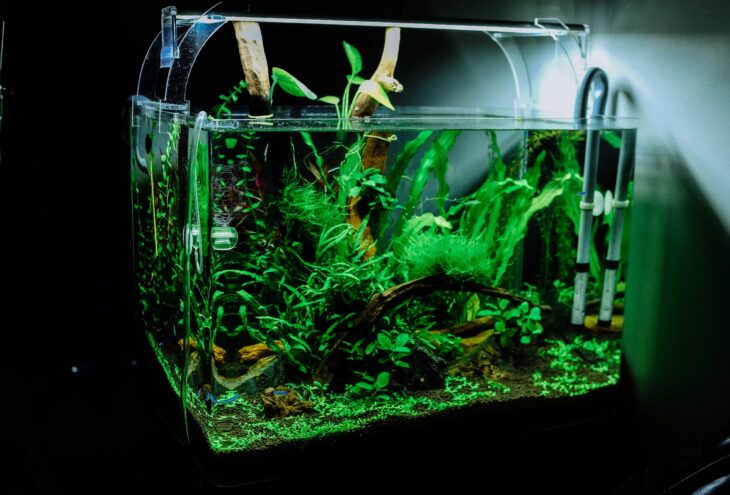
Source: unsplash.com
Adds to the temperature of the water
Bulbs, just like natural sun, also produce heat. Depending upon the proximity of the source and the water, it can have a noticeably drastic effect on the water temperature. This is particularly useful in case you have tropical fish that love warm water.
Lightening also helps maintain the coloration in fish. In the absence, Vitamin D scarcity leads to discoloration and other diseases in fish.
Helps the inner ecosystem
Now. If you want your aquarium to have some character and biodiversity, you may decide to get plants. These plants are not just decorative piece, but also help in keeping the water clean as biofilters. But plants require light for photosynthesis, and aquarium LEDs provide just that.
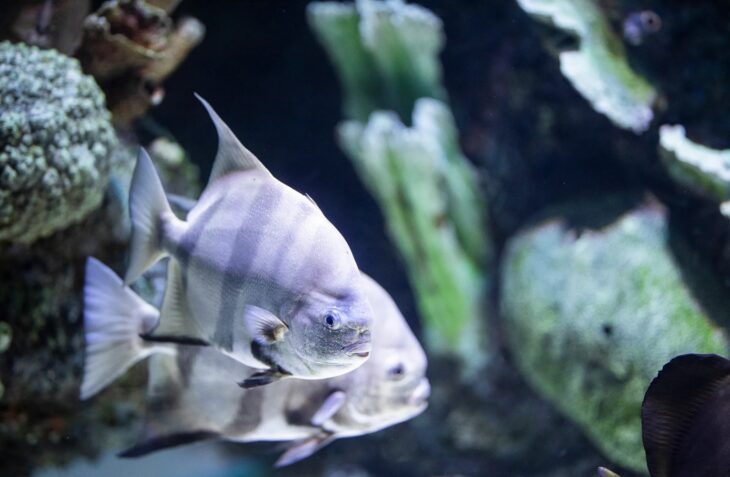
Source: pexels.com
Types of Lighting Systems
-
Incandescent
These were heavily used in the aquariums before because these were the only kinds that were easily available in the market. These give off a soft, natural-looking glow, but since these use tungsten as a heating element, they give off vast amounts off the heat. Hence incandescent lights have been slowly put out of use in aquarium tanks.
-
Fluorescent
These are the most efficient light sources you can use for your tank because you are a newbie and don’t have many spare expenses. These are also the most widely used in the aquarium for the very same reason. These are well suited for freshwater fish and planted aquariums, and these come in a variety of sizes to fit any aquarium hood or fixture. But these bulbs are circular tubes and tend to be inefficient because a proportion of emitted brightness being reflected upwards away from the aquarium.
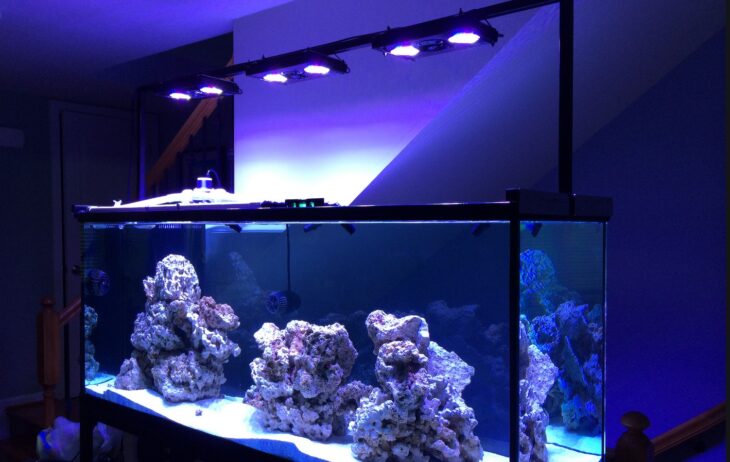
Source: EZTube
-
T-5 HO
These are more advanced types of Fluorescent bulbs, and the HO stands for high output. These are almost as twice as bright as your standard fluorescent bulbs and are ideally larger tank environments that required brighter deeper penetration of a mix of bulb types.
The downside is that these generate a significant amount of heat, so the temperature should be monitored continuously.
-
VHO
Just like the T-5HO, the Vey High Output bulbs are also known for producing high-intensity light and last much longer than your average fluorescent bulbs. And also, like the above type of bulbs, these provide a great deal of heat so that extra cooling may be required.
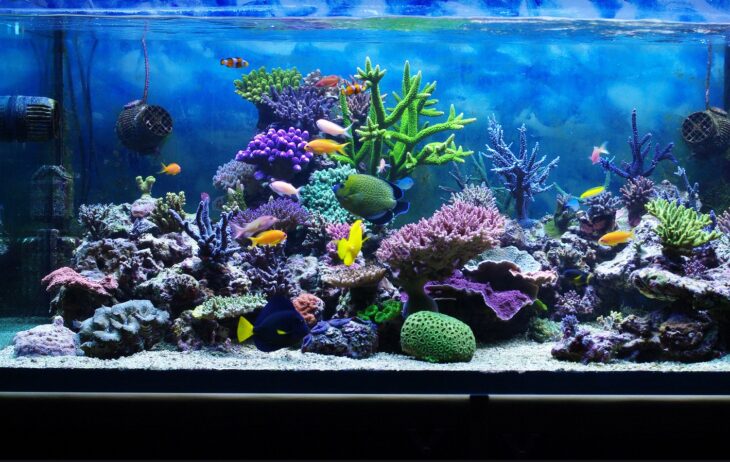
Source: Blue Paradise
-
Metal Halide
Metal halides produce the highest intensity of light among aquarium bulbs. Thus they require a fan or a chiller to keep the tank from overheating who stop since these are so powerful these can penetrate aquarium water that is more than 24 inches deep, making it an ideal system for huge tanks.
-
LED
The LED is relatively new in the aquarium lightning scene but is fast becoming the favorite of the market. It has a slimmer design, a variety of shimmer effects and colors, cold operating temperatures that do not add drastic changes to the water’s temperature, and low cost to operate. These also come in a wide selection of sizes and types and generate consistent color throughout their lifetime, unlike fluorescent ones that gradually change from white to yellow over three to six months.
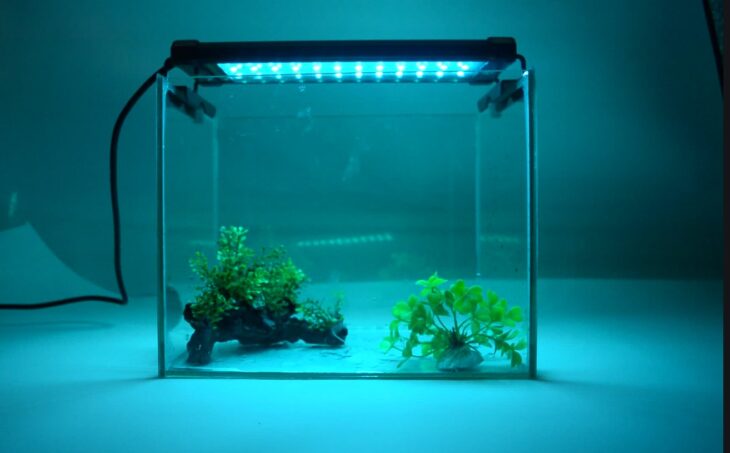
Source: Alibaba
How is light measured?
-
Wattage
Watt or Wattage is the amount of power or energy per time used by the bulb or power given off by the bulb.
-
Kelvin
Kelvin is the worldwide Standard Unit for the measurement of temperature. For us, what Kelvin means, however, is the color of the light emitted by the bulb. It is a parameter of how warm or how cool the bulb is as higher Kelvin/bluish is cooler color, and lower Kelvin/orangish is warmer tone.
-
Lumens
Lumen is the standard unit of measurement of brightness. It is brightness as perceived by the human eye.
-
PAR
PAR or Photosynthetically Active Radiation is the amount of light used by plants and algae to grow.
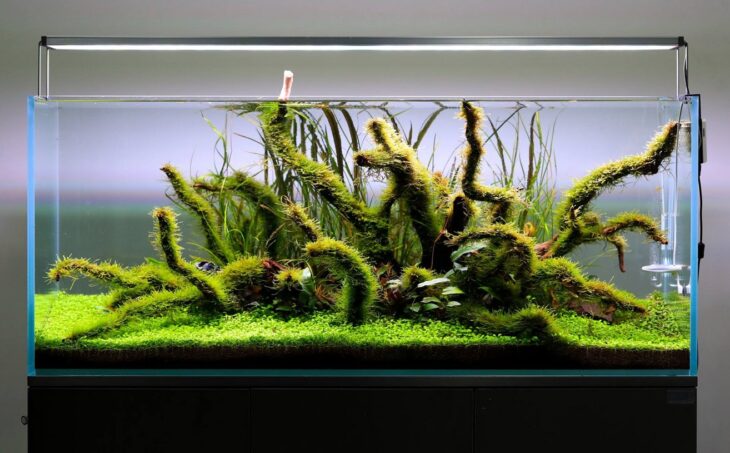
Source: aqualias
How much light is required?
This depends upon the following factors:
- The number and type of live plants in the tank.
- The species of fish present in your aquarium.
- The algae level in your aquarium.
- How much light is already present in the room.
If you have lots of plants in your aquarium, 10 hours of lights should be the starting point. 12 hours is just about perfect.
In her book “Ecology of the Planted Aquarium” Diana Walstad says that in a planted aquarium with no extra CO2 added, 5 hours of light than 4 hours off darkness followed by 5 hours of light is the way to go ahead.
If you plan to have a fish only tank with no plants, you will require 1 or 2 watts per gallon of light.
However, if you have plants, you will require 2 to 5 watts of full-spectrum lights per gallon of water.
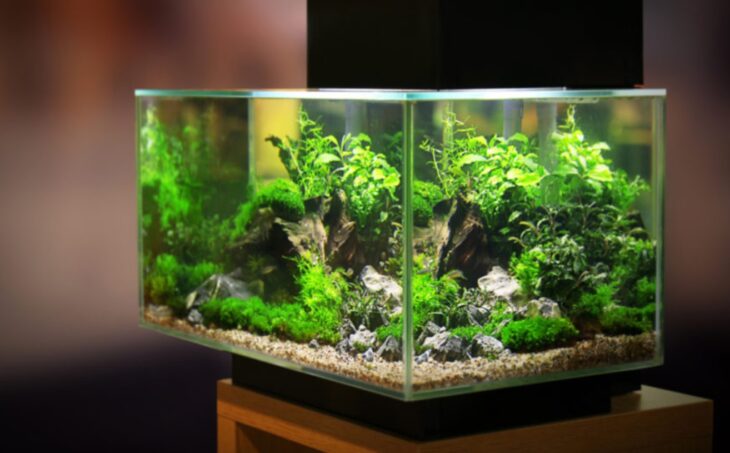
Source: Pet Central
FAQs
- Do fish need light all the time? Should I switch them off at night?
The whole concept of lightening your tank is to give the fish the conditions it would have got in its natural habitat. Thus, it becomes important to maintain a bright and dark period. Having them on all the time has severe effects on the immune system of the fish. So yes. Do switch off your lights for at least 12 to 10 hours in a period of 24 hours.
- I have heard that aquarium lights cause algae. Is it true?
Yes. Sort of. Bright lights do encourage algae growth. But the main cause behind algae growth is the extra nutritional things floating around in the tank. If you clean your tank and change the water and have proper filtration units, algae will not be a problem.
Conclusion
So, lights are not just your fancy decorative pieces in the aquarium. They play a massive role in your fish’s well-being and the fauna of your tank. It is essential to use full-spectrum lights, meaning radiations of all wavelengths of the visible region, to ensure proper growth of the fish’s fish and the maintenance of the ecosystem within your tank.
